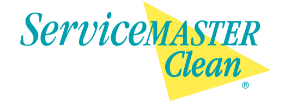Recently, I visited a popular restaurant for my second taste of their lunch fare. I immediately noticed the beautiful tiled floors, which I raved about on my first visit, had a new and unpleasant feel- the tacky thick feel of grease. “Oh no, you didn’t! You didn’t mop this floor with the kitchen mop!” Unfortunately, that is the likely scenario. This is a problem, not only for the long-term look and feel of the restaurant’s flooring but also for maintaining safety and preventing injury. It was raining that day and every drop of water brought in on patrons' shoes turned that floor into a slick and slippery water slide. Now the greasy floor becomes a liability issue.
Water on a greasy floor is dangerous and just as slippery as walking on a sheet of ice. Falls account for approximately 25% of all private industry injury claims each year and food preparation areas are within the top 5 locations where falls occur. Greasy mops used in a kitchen should never be used in other areas. This is a case of cross-contamination. Cross-contamination in cleaning is caused by one or all of the following: insufficient products, lack of cleaning procedures, or poor supervision of cleaners.
At ServiceMaster Clean®, we follow a process that prevents cross-contamination. We use our own quality products like FloorStar™ Degreaser to cut through and remove grease. Mop heads are soaked in degreaser and thoroughly rinsed between uses. Mops used in a greasy area like a kitchen or a machine shop are only used in that area. With proper tools and training along with a system for regular cleaning, dangerous floors and subsequent injuries from falls can be prevented.

